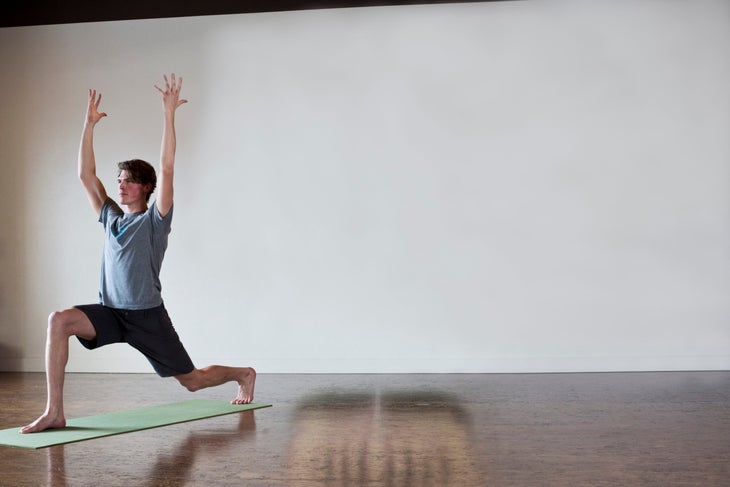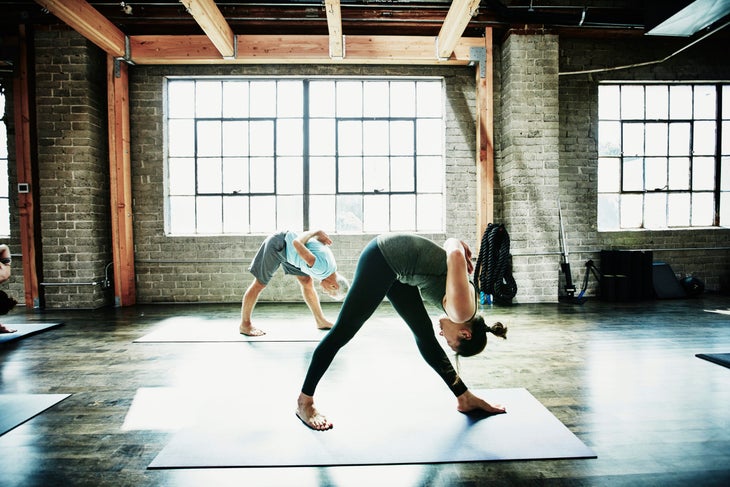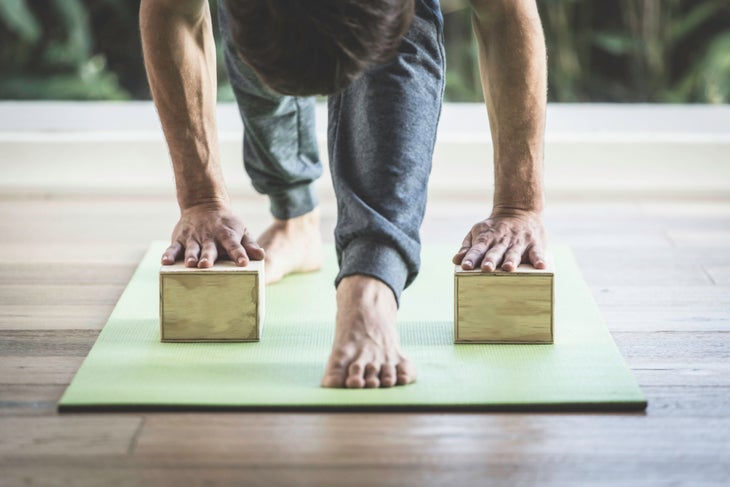One of the best ways to Adapt Poses to Uncover Support
“], “filter”: { “nextExceptions”: “img, blockquote, div”, “nextContainsExceptions”: “img, blockquote, a.btn, a.o-button”} }”>
Heading out the door? Be taught this textual content on the model new Exterior+ app obtainable now on iOS items for members!
>”,”determine”:”in-content-cta”,”type”:”hyperlink”}}”>Receive the app.
The robust issue about coaching yoga for tight hamstrings is it could effectively scale back the tightness. However the tightness in your hamstrings can hinder your yoga observe. It doesn’t have to be meaning.
There’s no shortage of variations that make it less complicated (and safer) to observe yoga no matter your tight hamstrings.
Anatomy of the Hamstrings
The time interval hamstrings refers to a bunch of muscle mass alongside the backs of your thighs comprising the biceps femoris, semimembranosus, and semitendinosus. After they contract, they bend the knee and delay the leg behind you from the hip joint. So many actions rely on the facility of the hamstrings, along with standing up, sitting down, strolling, working, squatting, dancing, and collaborating in most types of athletics.

Athletes—considerably runners—are inclined to hamstring strains because of they tend to overuse these muscle mass. Working in direction of yoga for hamstrings in a signifies that doesn’t overtax the muscle mass is one strategy to counteract that.
Why You Don’t Want to Overtax Your Hamstrings
When you’re unable to nail a yoga pose as merely as you’d like, there’s sometimes an inclination to intensify your efforts. Nevertheless that’s not how tight hamstrings work.
Say you’re in Warrior 1 or Pyramid Pose and your once more heel is down, your once more leg is straight(ish), and in addition you’re making an attempt to hold your once more hip to face the doorway of the mat…nevertheless your hamstrings are tight. One factor’s gotta give. That stress and tightness in your hamstrings, when ignored, tugs in your once more knee and low once more, doubtlessly wreaking havoc.
Even within the occasion you don’t immediately experience a tearing or a wrenching sensation, when you attempt to coerce one part of your physique earlier its current skills, you throw off your posture and set your self up for difficulties elsewhere in your physique. Your physique’s compensatory responses can, in time, create factors in your knees, hips, low once more, toes, and additional.
A lot much less dramatically, when your full physique falls out of alignment inside a pose, you’re unable to draw on yoga’s benefits, along with stretching and strengthening. Plus, the psychological distraction created by taut hamstrings cannot solely make you cringe and curse in school, it could effectively moreover make it troublesome to comprehend that coveted sense of calm and ease you’re in search of in your observe.
Any time you come to your observe with consciousness, you’re doing yoga. And part of that consciousness is determining when you’re overextending your self—or your hamstrings—and being eager to adapt your conduct accordingly.
One of the best ways to Regulate Frequent Standing Poses for Tight Hamstrings
Modifications aren’t about making a pose less complicated. It’s about preserving it protected, eliminating unintentional contortions in your physique, and respecting the integrity of the pose and your physique. It’s about sustaining alignment the place we’re in a position to and being okay with making modifications the place needed. Keep in mind: Your yoga observe isn’t outlined by the outward look of a pose.
As soon as it’s worthwhile to navigate a class whereas sustaining some measure of ease and stability as you transition from pose to pose—tight hamstrings nevertheless—the following tweaks let you do exactly that.

1. Bend Your Knee In its place of Conserving It Straight
“Within the occasion you need, preserve a bend in your knees,” is an ordinary refrain of an entire lot of yoga lecturers. Whether or not or not you actually heed the advice when you hear it is a wholly utterly totally different matter.
Bending your knee isn’t dishonest. It’s merely accepting your current actuality. In standing poses that require one or every legs to be straight, it’s worthwhile to actually really feel a stretch, not a strain, alongside the once more of your legs. Usually in order to make that happen, it is good to bend the straight leg considerably—or moderately quite a bit.
This may indicate in Extreme Lunge you bend your once more knee moderately than forcibly delay it. In any other case you come into Half Moon Pose and preserve considerably give in your standing leg. Comparable postures. Barely utterly totally different expressions.
You could preserve your “straight” leg bent in these standing poses:

2. Shorten Your Stance
Questioning within the occasion you’re feeling an extreme quantity of of a strain? Chances are, within the occasion you’re questioning, that could possibly be a transparent indication you may be earlier your threshold. In standing poses, scoot your toes nearer to 1 one different to manage your stance until your felt sense has downgraded from a strain to a stretch.
Don’t try to keep up your toes as far apart because the coach or the scholar on the mat subsequent to you. Go further by actually really feel and fewer by seems.
You could shorten your stance in these standing poses:

3. Use Your Blocks
When you place blocks beneath your shoulders and leisure your palms on them, you can actually really feel regular in poses the place you may in another case find yourself reaching or flailing, as in Warrior 3. Using blocks is akin to bringing the underside nearer to you. It retains you from overextending your hamstrings, straining your breath, or compromising alignment within the the rest of your physique—collectively together with your once more, shoulders, and neck—to compensate for talked about tightness.
This in flip allows you to focus and work together your physique as a result of the pose meant and, due to this, actually experience your observe. It’s all linked.
It’s best to use blocks beneath your palms in these standing poses:
- Standing Forward Bend Pose
- Standing Half Forward Bend Pose
- Pyramid Pose
- Downward-Going by Canine Pose
- Warrior 3
- Extended Triangle Pose
- Revolved Triangle Pose
- Extended Aspect Angle Pose
- Revolved Aspect Angle Pose
- Revolved Triangle Pose
- Half Moon Pose
- Revolved Half Moon Pose
- Standing Splits
This textual content has been updated. Initially printed September 3, 2021.






